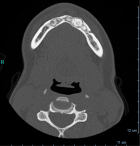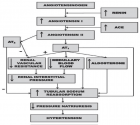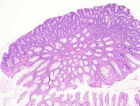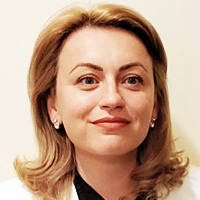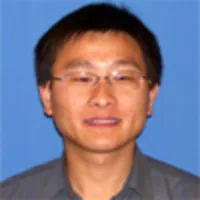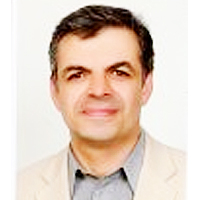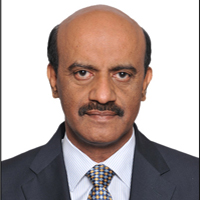Abstract
Opinion
Hypothesis about pathogenic action of Sars-COV-2
Del Prete Salvatore*, Marasco Daniela and Sabetta Rosalaura
Published: 27 March, 2020 | Volume 4 - Issue 1 | Pages: 021-022
The Hypothesis born on a simple clinical data noted by some Chinese Reserchers during the starting point of epidemic began in the dicember of the 2019, for the novel member of human coronavirus, officially named as SARS‐CoV‐2 (severe acute respiratory syndrome coronavirus 2) by International Committee on Taxonomy of Viruses (ICTV) is a new strain of RNA viruses that has not been previously identified in humans [1]. Sars-COV and SARS CoV-2 have some clinical differences. First: The Sars, severe acute respiratory sindrome induce a respiratory disease in immunocompetent hosts, although can cause severe infections in infant, young children and elderly individuals; Sars-CoV-2 induce a middle infection into the young children but the mortality is more high in to the adult population. We made a macthing with balst p of these sequences, Sars COV-2, taken on GENEBANK with H1N1 neuraminidase and the not structural protein NS1 and NS2 an interferon antagonist that may also stimulate proinflammatory cytokines in infected cells We can speculate that the mutation is occurred on accessories protein making a different virulence action between the two species Sars Cov and Sars Cov-2, same action we have founded in the H1N1 viral pandemic of the 2019.
Read Full Article HTML DOI: 10.29328/journal.ijcv.1001009 Cite this Article Read Full Article PDF
Keywords:
Sars-COV-2; Hotspot mutation; H1N1
References
- Zhang JJ, Dong X, Cao YY, Yuan YD, Yang YB, et al. Clinical characteristics of 140 patients infected by SARS-CoV-2 in Wuhan, China. EAACI. 2020.
- Cheng VC, To KK, Tse H, Hung IF, Yuen KY. Two years after pandemic influenza A/2009/H1N1: what have we learned? Clin Microbiol Rev. 2012; 25: 223-263. PubMed: https://www.ncbi.nlm.nih.gov/pubmed/22491771
- Cui J, Li F, Shi ZL. Origin and evolution of pathogenic coronaviruses. Nat Rev Microbiol. 2019; 17: 181-192. PubMed: https://www.ncbi.nlm.nih.gov/pubmed/30531947
- Oldstone MB. Lessons learned and concepts formed from study of the pathogenesis of the two negative-strand viruses lymphocytic choriomeningitis and influenza. Proc Natl Acad Sci USA. 2013; 110: 4180-4183. PubMed: https://www.ncbi.nlm.nih.gov/pubmed/23341590
- Xia S, Zhu Y, Liu M, Lan Q, Xu W, et al. Fusion mechanism of 2019-nCoV and fusion inhibitors targeting HR1 domain in spike protein. Cell Mol Immunol. 2020. PubMed: https://www.ncbi.nlm.nih.gov/pubmed/32047258
- Oldstone MBA, Ware BC, Horton LE, Welch MJ, Aiolfi R, et al. Lymphocytic choriomeningitis virus Clone 13 infection causes either persistence or acute death dependent on IFN-1, cytotoxic T lymphocytes (CTLs), and host genetics. Proc Natl Acad Sci USA. 2018; 115: E7814-E7823. PubMed: https://www.ncbi.nlm.nih.gov/pubmed/30061383
- Xu K, Cai H, Shen Y, Ni Q, Chen Y, et al. Management of corona virus disease-19 (COVID-19): the Zhejiang experience. Zhejiang Da Xue Xue Bao Yi Xue Ban. 2020; 49: 0. PubMed: https://www.ncbi.nlm.nih.gov/pubmed/32096367
Similar Articles
-
Pseudoephedrine protects mice from infection of H1N1 virusZhongping Wu*,Li Deng,Chengzhi Chu,Xiaoyin Chen*. Pseudoephedrine protects mice from infection of H1N1 virus. . 2020 doi: 10.29328/journal.ijcv.1001008; 4: 014-020
-
Hypothesis about pathogenic action of Sars-COV-2Del Prete Salvatore*,Marasco Daniela,Sabetta Rosalaura. Hypothesis about pathogenic action of Sars-COV-2. . 2020 doi: 10.29328/journal.ijcv.1001009; 4: 021-022
-
Exploring pathophysiology of COVID-19 infection: Faux espoir and dormant therapeutic optionsVinod Nikhra*. Exploring pathophysiology of COVID-19 infection: Faux espoir and dormant therapeutic options. . 2020 doi: 10.29328/journal.ijcv.1001013; 4: 034-040
-
Identifying patterns in COVID-19: Morbidity, recovery and the aftermathVinod Nikhra*. Identifying patterns in COVID-19: Morbidity, recovery and the aftermath. . 2020 doi: 10.29328/journal.ijcv.1001016; 4: 056-064
-
Role of nanotechnology in diagnosing and treating COVID-19 during the PandemicAbdul Baset*,Abdul Waris,Muhammad Ali,Atta Ullah Khan,Asmat Ali. Role of nanotechnology in diagnosing and treating COVID-19 during the Pandemic. . 2020 doi: 10.29328/journal.ijcv.1001017; 4: 065-070
-
Can house flies mechanically carry and/or transport sars-cov-2?Alfredo Montes*,Wilfrido Coronell,Rosa Baldiris. Can house flies mechanically carry and/or transport sars-cov-2?. . 2020 doi: 10.29328/journal.ijcv.1001019; 4: 076-078
-
Inhaled statins to combat COVID-19 – prophylactic and treatment approachArchana P Iyer*,Maryam A Al-Ghamdi. Inhaled statins to combat COVID-19 – prophylactic and treatment approach. . 2020 doi: 10.29328/journal.ijcv.1001020; 4: 079-080
-
A Comprehensive review on genomic diversity and epidemiology of COVID-19Zeshan Haider Raza*,Muhammad Ahmed Ihsan,Sahrish Khan,Haroon Zafar,Tayyaba Rehman. A Comprehensive review on genomic diversity and epidemiology of COVID-19. . 2020 doi: 10.29328/journal.ijcv.1001021; 4: 081-095
-
The expected second wave of COVID-19Madiha Asghar*,Misbahud Din. The expected second wave of COVID-19. . 2020 doi: 10.29328/journal.ijcv.1001024; 4: 109-110
-
COVID-19 pandemic, recurrent outbreaks and prospects for assimilation of hCoV-19 into the human genomeVinod Nikhra*. COVID-19 pandemic, recurrent outbreaks and prospects for assimilation of hCoV-19 into the human genome. . 2020 doi: 10.29328/journal.ijcv.1001025; 4: 111-115
Recently Viewed
-
Sinonasal Myxoma Extending into the Orbit in a 4-Year Old: A Case PresentationJulian A Purrinos*, Ramzi Younis. Sinonasal Myxoma Extending into the Orbit in a 4-Year Old: A Case Presentation. Arch Case Rep. 2024: doi: 10.29328/journal.acr.1001099; 8: 075-077
-
Toxicity and Phytochemical Analysis of Five Medicinal PlantsJohnson-Ajinwo Okiemute Rosa*, Nyodee, Dummene Godwin. Toxicity and Phytochemical Analysis of Five Medicinal Plants. Arch Pharm Pharma Sci. 2024: doi: 10.29328/journal.apps.1001054; 8: 029-040
-
Antibacterial Screening of Lippia origanoides Essential Oil on Gram-negative BacteriaRodrigo Marcelino Zacarias de Andrade, Bernardina de Paixão Santos, Roberson Matteus Fernandes Silva, Mateus Gonçalves Silva*, Igor de Sousa Oliveira, Sávio Benvindo Ferreira, Rafaelle Cavalcante Lira. Antibacterial Screening of Lippia origanoides Essential Oil on Gram-negative Bacteria. Arch Pharm Pharma Sci. 2024: doi: 10.29328/journal.apps.1001053; 8: 024-028.
-
Next Generation Tools in mRNA Purification: The Role of Continuous Raman Spectroscopy Testing with Pretreatment of the SampleLuisetto M*, Nili B Ahmadabadi, Khaled Edbey, Oleg Yurevich Latyshev. Next Generation Tools in mRNA Purification: The Role of Continuous Raman Spectroscopy Testing with Pretreatment of the Sample. Arch Pharm Pharma Sci. 2024: doi: 10.29328/journal.apps.1001052; 8: 021-023
-
COVID-19 in pregnancy: Our experience at a tertiary maternity unit in FranceDarido Jessie*,El Haddad Cynthia,Diari Jed,Grevoul Fesquet Julie,Bouzid Nassima,Bobric Andrea,Lakhdara Nefissa,Bazzi Zeinab,Lebis Cindy,Khadam Louay,Rigonnot Luc. COVID-19 in pregnancy: Our experience at a tertiary maternity unit in France. Clin J Obstet Gynecol. 2020: doi: 10.29328/journal.cjog.1001051; 3: 054-064
Most Viewed
-
Evaluation of Biostimulants Based on Recovered Protein Hydrolysates from Animal By-products as Plant Growth EnhancersH Pérez-Aguilar*, M Lacruz-Asaro, F Arán-Ais. Evaluation of Biostimulants Based on Recovered Protein Hydrolysates from Animal By-products as Plant Growth Enhancers. J Plant Sci Phytopathol. 2023 doi: 10.29328/journal.jpsp.1001104; 7: 042-047
-
Sinonasal Myxoma Extending into the Orbit in a 4-Year Old: A Case PresentationJulian A Purrinos*, Ramzi Younis. Sinonasal Myxoma Extending into the Orbit in a 4-Year Old: A Case Presentation. Arch Case Rep. 2024 doi: 10.29328/journal.acr.1001099; 8: 075-077
-
Feasibility study of magnetic sensing for detecting single-neuron action potentialsDenis Tonini,Kai Wu,Renata Saha,Jian-Ping Wang*. Feasibility study of magnetic sensing for detecting single-neuron action potentials. Ann Biomed Sci Eng. 2022 doi: 10.29328/journal.abse.1001018; 6: 019-029
-
Pediatric Dysgerminoma: Unveiling a Rare Ovarian TumorFaten Limaiem*, Khalil Saffar, Ahmed Halouani. Pediatric Dysgerminoma: Unveiling a Rare Ovarian Tumor. Arch Case Rep. 2024 doi: 10.29328/journal.acr.1001087; 8: 010-013
-
Physical activity can change the physiological and psychological circumstances during COVID-19 pandemic: A narrative reviewKhashayar Maroufi*. Physical activity can change the physiological and psychological circumstances during COVID-19 pandemic: A narrative review. J Sports Med Ther. 2021 doi: 10.29328/journal.jsmt.1001051; 6: 001-007

HSPI: We're glad you're here. Please click "create a new Query" if you are a new visitor to our website and need further information from us.
If you are already a member of our network and need to keep track of any developments regarding a question you have already submitted, click "take me to my Query."






